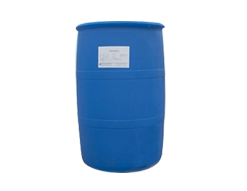When the pH of alkyl glycoside leaching solution was 5.2 and the concentration was 85 g / L, the removal rates of CD, Cu, Pb and Zn in soil reached 77.7%, 40.5%, 24.5% and 20.0% respectively. The change of solution ionic strength has little effect on the removal of Cu, Zn and Pb, but the removal rate of CD increases with the increase of NaCI Solution Concentration. Comparing the forms of heavy metals in soil before and after APG treatment, it is found that APG has the best removal effect on ion-exchange and carbonate bound heavy metals, indicating that APG elution can effectively reduce the toxicity and bioavailability of heavy metals in soil.
Biosurfactants are mainly used in the remediation of soil heavy metal pollution. Mulligan et al. Reported the removal of heavy metals in sediments by rhamnolipid, surfactin and Sophorae glucolipid; Hong et al. Studied the removal effect of saponin on Cu and Zn in three different matrix soils. The removal rates of Cu and Zn in soil were 90% ~ 100% and 85% ~ 98% respectively.

These biosurfactants have become a research hotspot in the field of environmental remediation in recent years because of their high surface activity, low toxicity and complete degradation. However, at present, the industrialized production technology of biosurfactants is not mature, resulting in the high cost of this kind of lotion, which is difficult to be popularized and utilized on a large scale.
Heavy metal pollution in soil is hidden, cumulative, lagging and long-term, which seriously endangers human health and the environment on which it depends. Therefore, the research on the remediation of heavy metal contaminated soil has become an important topic in the field of environmental science. However, the environmental remediation of soil heavy metal pollution is affected by many factors, such as soil properties, heavy metal distribution patterns and so on.
Chemical leaching remediation is an important original / ectopic leaching remediation technology of heavy metal contaminated soil. The key of its technology is the selection of efficient and environmentally compatible leaching agents. Common pollution remediation lotions mainly include inorganic lotions, artificial chelating agents, natural organic acids and surfactants. Inorganic eluents such as acid, alkali and salt have low cost, good pollution removal effect and fast action speed, but these eluents will not only remove polluting elements, but also bring problems such as soil nutrient loss. The biodegradability of artificial chelating agents such as ethylenediamine tetraacetic acid (EDTA) is poor. The residue after leaching will cause secondary pollution of soil and may also affect groundwater.